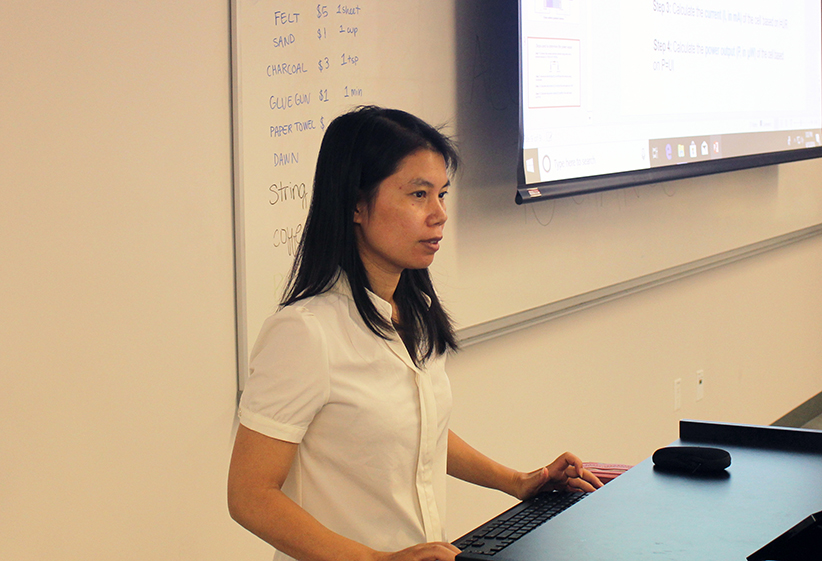Hidden Spark: LSU CEE Professor Discovers Energy in Wastewater
 BATON ROUGE – Though some may use the term “wastewater,” LSU Civil and Environmental
Engineering Assistant Professor Xiuping Zhu is in the process of proving that’s not
an entirely accurate descriptor.
BATON ROUGE – Though some may use the term “wastewater,” LSU Civil and Environmental
Engineering Assistant Professor Xiuping Zhu is in the process of proving that’s not
an entirely accurate descriptor.
She is currently working on five research projects that revolve around energy and water and show there is enough energy in wastewater, seawater, and river water to power large cities.
Thanks to funding from the Louisiana Board of Regents, Zhu is researching the means of developing a novel-battery system to harvest energy from seawater and river water. She said that when two waters of different salt concentrations, such as seawater and river water, combine, there is a release of free energy driven by the difference in chemical potentials called salinity gradient (SG) energy.
“The potential power production from estuarine salinity gradient energy between seawater and river water is estimated to be 1.4-2.6 TW (terawatts), which is similar to the current worldwide demand for electrical power (~2 TW),” Zhu said. “The extractable SG energy between seawater and river water globally is 625 billion kWh (kilowatt hours) per year, which is equivalent to three percent of global electricity consumption. That is enough energy to light 1,188,213,000 60-watt bulbs and 58,053,000 households, which is 55 percent of U.S. households.”
Zhu has proposed a new approach to harvest the SG energy from seawater and river water based on alternatively Na+/Cl– (sodium chloride) intercalation with the electrode in seawater and deintercalation with the electrode in river water. These are called salinity gradient batteries, which would work efficiently for SG energy recovery.
“The success of this project could have important implications for global energy production using environmentally friendly technologies,” Zhu said.
She also found that the energy from wastewater could be used to power the treatment of wastewater.
“Energy contained in U.S. wastewater is 150 billion kWh per year, which is six times the amount of energy demand for wastewater treatment,” she said. “This is enough power to light 285,171,000 60-watt bulbs and 13,932,000 households, which is 13 percent of U.S. households.”
Additionally, to produce electricity using wastewater and power space wastewater treatment, Zhu proposed a microbial concentration cell (MCC) supported by the Louisiana Space Consortium, or LaSPACE. No external energy input is needed for an MCC. Energy recovered from wastewater through biological processes will be used to power the membrane processes. This system can not only remove organic pollutants, but also recover salts and N/P nutrients.
“This is a good demonstration on development of energy-sustainable wastewater treatment processes by using energy contained in wastewater,” Zhu said.
Like us on Facebook (@lsuengineering) or follow us on Twitter and Instagram (@lsuengineering).
###
Contact: Libby Haydel
Communications Specialist
225-578-4840